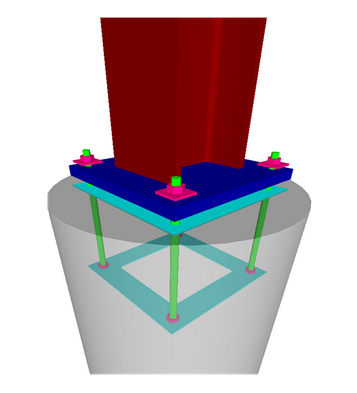I haven’t talked about BIM (Building Information Modeling) in a while so I thought I’d take a look at what resources are available for those interested in learning more about BIM, or more about how and why to integrate BIM into their projects.
There are a number of organizations that have created guides, standards and other resources. Some of these are free and some can be purchased. I thought I’d list off a few that I think should be on your radar.
NBIMS
The National BIM Standard – United StatesTM (NBIMS-USTM) is an initiative of the National Institute of Building Sciences buildingSMART allianceTM. The NBIMS-US™ Project Committee brings together the broadest and deepest constituency ever assembled, and uses an Industry consensus process to establish open-source National standards and guidance for all aspects of BIM.
The goal at the National Institute of Building Sciences is to establish, through the NBIMS-US™ Project, the standards needed to foster innovation in processes and infrastructure so that end-users throughout all facets of the industry can efficiently access the information needed to create and operate optimized facilities.
Penn State
Penn State Computer Integrated Construction offers two resources:
- The Penn State BIM Execution Planning Guide provides a structured procedure for creating and implementing a BIM Project Execution Plan. The goal for developing this structured procedure is to ensure planning and elaborate communication among the project participants during the early phases of a project.
- The BIM Planning Guide for Facility Owners was developed primarily for facility owners, and focuses on the decisions required to define their organization’s standard BIM processes and practices; design information integration strategies; and identify appropriate BIM contracting strategies.
GSA BIM Guide Series
The U.S. General Services Administration has pioneered the industry by integrating BIM into their projects. The GSA National 3D-4D-BIM Program includes an eight part series referred to as the BIM Guide Series. In this series, GSA explores the use of BIM technology throughout a project’s lifecycle in the following areas: spatial program validation, 4D phasing, laser scanning, energy and sustainability, circulation and security validation, and building elements.
BIMForum Level of Development (LOD) Specification
The BIMForum’s mission is to facilitate and accelerate the adoption of building information modeling (BIM) in the AEC industry. The Level of Development (LOD) Specification is a reference that enables practitioners in the AEC Industry to specify and articulate with a high level of clarity the content and reliability of Building Information Models (BIMs) at various stages in the design and construction process.
The LOD Specification utilizes the basic LOD definitions developed by the AIA for the AIA G202-2013 Building Information Modeling Protocol Form[1] and is organized by CSI Uniformat 2010[2]. It defines and illustrates characteristics of model elements of different building systems at different Levels of Development. This clear articulation allows model authors to define what their models can be relied on for, and allows downstream users to clearly understand the usability and the limitations of models they are receiving.
The intent of this Specification is to help explain the LOD framework and standardize its use so that it becomes more useful as a communication tool. It does not prescribe what Levels of Development are to be reached at what point in a project but leaves the specification of the model progression to the user of this document.
These guides and standards represent some of the more recognized resources available today regarding BIM. Each has its place in helping to improve our use of BIM. Links have been provided to their respective websites so you can easily access these documents and review them for yourself. If you are not already familiar with them I highly recommend checking them out.






